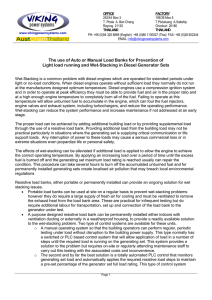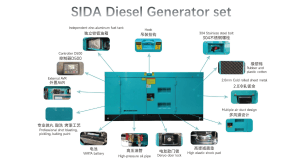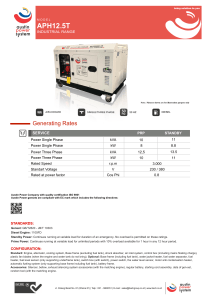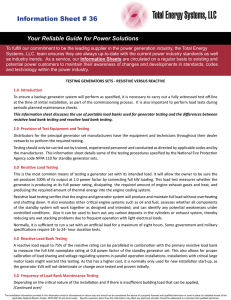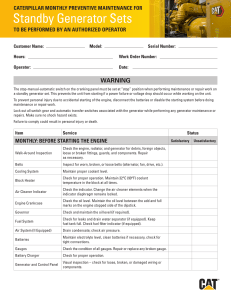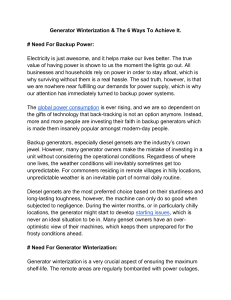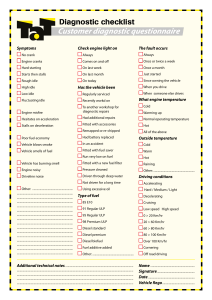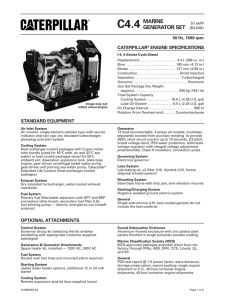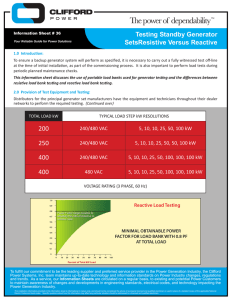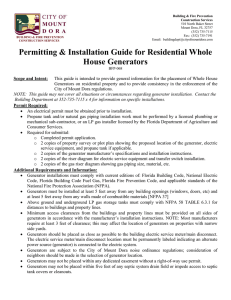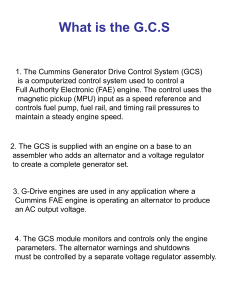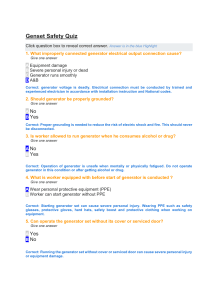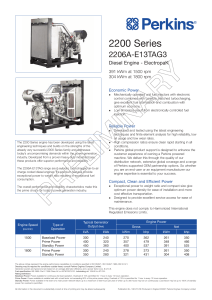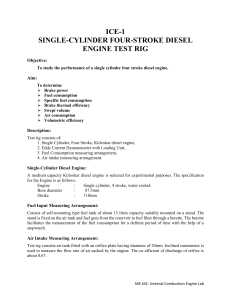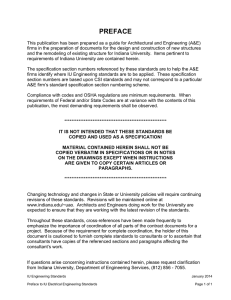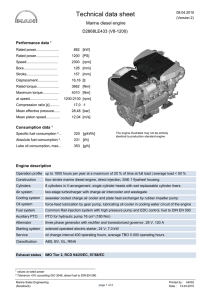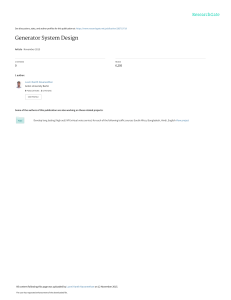Load Bank Testing
advertisement
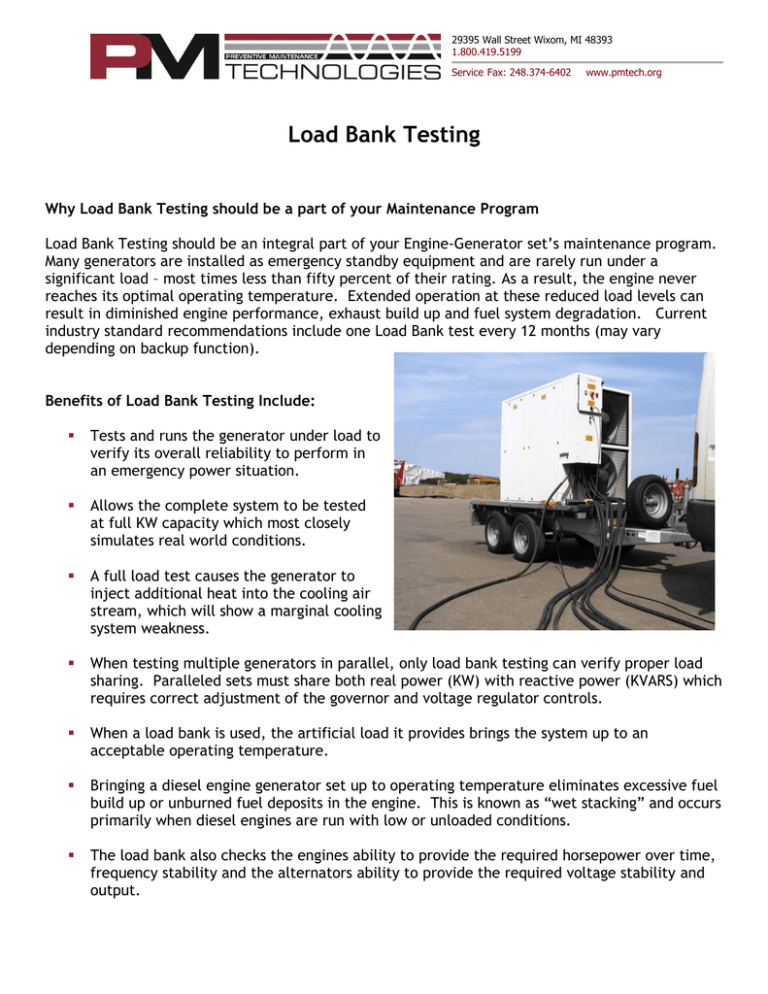
29395 Wall Street Wixom, MI 48393 1.800.419.5199 Service Fax: 248.374-6402 www.pmtech.org Load Bank Testing Why Load Bank Testing should be a part of your Maintenance Program Load Bank Testing should be an integral part of your Engine-Generator set’s maintenance program. Many generators are installed as emergency standby equipment and are rarely run under a significant load – most times less than fifty percent of their rating. As a result, the engine never reaches its optimal operating temperature. Extended operation at these reduced load levels can result in diminished engine performance, exhaust build up and fuel system degradation. Current industry standard recommendations include one Load Bank test every 12 months (may vary depending on backup function). Benefits of Load Bank Testing Include: Tests and runs the generator under load to verify its overall reliability to perform in an emergency power situation. Allows the complete system to be tested at full KW capacity which most closely simulates real world conditions. A full load test causes the generator to inject additional heat into the cooling air stream, which will show a marginal cooling system weakness. When testing multiple generators in parallel, only load bank testing can verify proper load sharing. Paralleled sets must share both real power (KW) with reactive power (KVARS) which requires correct adjustment of the governor and voltage regulator controls. When a load bank is used, the artificial load it provides brings the system up to an acceptable operating temperature. Bringing a diesel engine generator set up to operating temperature eliminates excessive fuel build up or unburned fuel deposits in the engine. This is known as “wet stacking” and occurs primarily when diesel engines are run with low or unloaded conditions. The load bank also checks the engines ability to provide the required horsepower over time, frequency stability and the alternators ability to provide the required voltage stability and output. Critical application of power such as hospitals, health care and computer data centers has created the need to maximize the quality and reliability of systems. Our Load Bank test includes: Attaching our load bank and running the generator under varying load conditions for 2 or 4 hours. Industry recommendation is a 4 hour test. A complete report detailing the results and recommendations for adjustments or improvements. Provides the necessary loaded capacities for testing emergency and standby power equipment to meet NFPA requirements If accepted, this test will be completed in conjunction with the Secondary Maintenance Service or at the initial start-up of unit to satisfy the NFPA 110 requirement.


